Industrial Application - Programmable Logic Controller
A
programmable logic controller
(PLC) is an electronic device used in many industries to monitor and control building systems and
production
processes. Unlike PCs and smartphones, which are designed to perform any number of roles, a PLC is designed to
perform a single set of tasks, except under real-time constraints and with superior reliability and performance.
To meet the demands of harsh industrial environments, PLCs are designed to be extremely robust, often capable of
withstanding extreme temperatures, humidity, vibration, and electrical noise. Logic controllers are commonly
tasked with monitoring and controlling a very large number of sensors and actuators, and are therefore distinct
from other computer systems in their extensive input/output (I/O) arrangements.
Traditionally, PLCs were programmed with a simple type of language called "ladder logic" because they were
originally designed to replace relay logic systems. Today, a number of different programming languages are used,
but each PLC supplier has their own programming specifications based on the IEC 61131-3 standard.
Although they have roughly the same sort of components found in many other computer systems, PLCs operate quite
differently. A PLC operating cycle, or scan, consists of:
-
Reading and storing the current value of each input
-
Changing all physical outputs to match the output table values stored in data memory
-
Sequentially executing the instructions in program memory, while storing any updated variables or outputs to
data memory
The order in which these tasks are performed can vary from product to product and software to software, but each
task is performed in sequence. This means that the inputs, outputs, and program instructions are, in a sense,
isolated from each other. If one or more physical inputs change during the logic scan (task c, above), the input
value table will not be changed until the next scan cycle, and so the program logic will not be invalidated.
Similarly, the output channels will not be updated to match the output table until the program cycle is complete.
These scans are made quite rapidly, often taking just microseconds to complete.
While most commonly used for industrial manufacturing processes, the unique strengths of PLCs can make them viable
for many different applications. A building automation system (BAS) may use a PLC (instead of some other
controller type) for a substantial boost in processing power and system response. A PLC used in building
automation may have a variety of sensors as inputs, ranging from a simple limit switch to a mesh network of
airflow sensors. Various types of I/O ports let building operations and maintenance personnel interface with the
PLCs to monitor and adjust their behaviors from a central location, typically referred to as a Supervisory Control
and Data Acquisition (SCADA) system.
V
REF
Limit Switch
V
REG
Amp
Amp
Amp
Amp
Serializer
Serializer
Serializer
PMIC
ADC
ADC
ADC
Processor
Isolation
V
REF
DAC
Driver
Amp
Amp
Relay
ESD
ESD
ESD
D-Sub
Circular Metric
Connectors
RJ-45
Programmable Logic Controller Block Diagram
View Product List
Reference Voltage ICs for PLCs
 A
voltage reference
produces a constant level of voltage over time regardless of load, changes in power supply, or temperature.
Voltage references are used in power supplies, analog-to-digital converters, digital-to-analog converters, and
many other applications where voltage levels must be maintained at a steady level. Without a voltage reference,
precision is greatly affected and may render the device inoperable. Voltage references can vary greatly in
performance. A voltage reference for a power supply might hold its output to within only a few percentage points
off of its nominal or stated value; however, a voltage reference to instrumentation-level standards are measured
in parts per million regarding stability and precision to the nominal or specified value.
A
voltage reference
produces a constant level of voltage over time regardless of load, changes in power supply, or temperature.
Voltage references are used in power supplies, analog-to-digital converters, digital-to-analog converters, and
many other applications where voltage levels must be maintained at a steady level. Without a voltage reference,
precision is greatly affected and may render the device inoperable. Voltage references can vary greatly in
performance. A voltage reference for a power supply might hold its output to within only a few percentage points
off of its nominal or stated value; however, a voltage reference to instrumentation-level standards are measured
in parts per million regarding stability and precision to the nominal or specified value.
Air Flow Sensors for PLCs
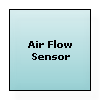 Air flow sensors
are devices that measure the volume or mass of air passing through a given area per unit time. One of the most
common of these sensors measure air flow using thermal-based sensing. Greater air flow causes faster cooling of a
thin wire or film which is heated above the ambient air temperature. As air flow increases, more current must be
passed through the heated object to maintain a constant temperature. Together with a bridge circuit and thermistor
(to compensate for variations in air temperature), the sensor is capable of measuring air flow with high precision
and fast response time.
Air flow sensors
are devices that measure the volume or mass of air passing through a given area per unit time. One of the most
common of these sensors measure air flow using thermal-based sensing. Greater air flow causes faster cooling of a
thin wire or film which is heated above the ambient air temperature. As air flow increases, more current must be
passed through the heated object to maintain a constant temperature. Together with a bridge circuit and thermistor
(to compensate for variations in air temperature), the sensor is capable of measuring air flow with high precision
and fast response time.
Temperature Sensors for PLCs
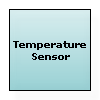 A
temperature sensor
is a device that measures cold or heat as a temperature or temperature gradient. Many applications require some
implementation of temperature sensing and measurement. For motors, the operating temperature inside the case is
monitored by the processor and set to alarm or shut down at temperatures higher than the normal operating
temperature of the motor. If a motor runs at too high of a temperature for too long, it can reduce the life of the
motor. Operating temperature is an indication of the general operating health of the motor. Higher temperatures
inside the motor case can mean too high of a load is placed on the motor, since as load increases, motor current
consumption increases to meet the load requirements.
A
temperature sensor
is a device that measures cold or heat as a temperature or temperature gradient. Many applications require some
implementation of temperature sensing and measurement. For motors, the operating temperature inside the case is
monitored by the processor and set to alarm or shut down at temperatures higher than the normal operating
temperature of the motor. If a motor runs at too high of a temperature for too long, it can reduce the life of the
motor. Operating temperature is an indication of the general operating health of the motor. Higher temperatures
inside the motor case can mean too high of a load is placed on the motor, since as load increases, motor current
consumption increases to meet the load requirements.
Position Sensors for PLCs
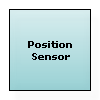 A position sensor is any device that permits position measurement. It can either be an absolute position sensor or
a relative one. Position sensors can be either linear or angular.
A position sensor is any device that permits position measurement. It can either be an absolute position sensor or
a relative one. Position sensors can be either linear or angular.
Poisitioning Sensors are finding their way into more handheld, Industrial Applications and industrial devices
every day. Knowing the position and orientaion of a device or tool is critical for any modern control system to
work accurately. Examples are as varied as a smart phone, a drilling platform, or the attitude control of a Boeing
777.
Liquid Level Sensors for PLCs
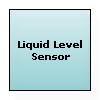 A
liquid level sensor
is used to detect the fluid level in a container. Although some types of level sensors can provide continuous
measurements, point-level detectors are generally used for applications in which only a small number of threshold
levels (e.g., a maximum and minimum) need to be monitored. Sensing methods are wide and varied, with the primary
criterion for selection being the specific application for which a sensor is needed.
A
liquid level sensor
is used to detect the fluid level in a container. Although some types of level sensors can provide continuous
measurements, point-level detectors are generally used for applications in which only a small number of threshold
levels (e.g., a maximum and minimum) need to be monitored. Sensing methods are wide and varied, with the primary
criterion for selection being the specific application for which a sensor is needed.
Limit Switch for Programmable Logic Controllers
 An electrical switch is a device that can close and open a circuit.
Limit switches
are, in general, electromechanical devices and are operated by the motion of some external object such as a
machine part. In an HVAC system, a limit switch is often used to monitoring the state of a damper or valve.
An electrical switch is a device that can close and open a circuit.
Limit switches
are, in general, electromechanical devices and are operated by the motion of some external object such as a
machine part. In an HVAC system, a limit switch is often used to monitoring the state of a damper or valve.
Vibration Sensors for PLCs
 Vibrations produced by industrial machinery often serve as an indicator of that machine’s state of repair.
Continuing to operate equipment that is already in need of servicing can exacerbate the damage or even destroy the
machine.
Vibration sensors
provide a means for rapidly disabling a malfunctioning machine to prevent further damage, and can in many cases
predict the malfunction before it even occurs. In an HVAC system, the electric motor(s) may include vibration
sensors as an added precaution against mechanical and electrical defects.
Vibrations produced by industrial machinery often serve as an indicator of that machine’s state of repair.
Continuing to operate equipment that is already in need of servicing can exacerbate the damage or even destroy the
machine.
Vibration sensors
provide a means for rapidly disabling a malfunctioning machine to prevent further damage, and can in many cases
predict the malfunction before it even occurs. In an HVAC system, the electric motor(s) may include vibration
sensors as an added precaution against mechanical and electrical defects.
Voltage Regulators for PLCs
 DC/DC regulators are circuits that convert DC voltage from one level to another and maintain that voltage to a
constant level. Electronic systems often have several sub-circuits, each with its own voltage level requirement
that may be higher or lower than the main power supply. Step-up converters or regulators boost a voltage to a
higher level. Step-down converters or
regulators
lower (or B74"buck") a voltage to a lower level. DC/DC converters and controllers can also be used for the same
purpose, but may offer options such as multiple softstart levels, undervoltage lockout, protection against
overvoltage and undervoltage, and programmable short-circuit protection. All of these devices are considered to be
in the same category of integrated chips, typically categorized as power management devices.
DC/DC regulators are circuits that convert DC voltage from one level to another and maintain that voltage to a
constant level. Electronic systems often have several sub-circuits, each with its own voltage level requirement
that may be higher or lower than the main power supply. Step-up converters or regulators boost a voltage to a
higher level. Step-down converters or
regulators
lower (or B74"buck") a voltage to a lower level. DC/DC converters and controllers can also be used for the same
purpose, but may offer options such as multiple softstart levels, undervoltage lockout, protection against
overvoltage and undervoltage, and programmable short-circuit protection. All of these devices are considered to be
in the same category of integrated chips, typically categorized as power management devices.
Precision Amplifiers for PLCs
 A
precision amplifier
is used for sensors to preserve accuracy. It increases the amplitude of weak signals it receives while introducing
as little noise as possible so that the signal transfers an accurate or precise measure of what it is sensing.
Amplifiers have enormous voltage gain, often use feedback of the output signal back to the input of the amplifier
to operate, and can be classified in different ways. An amplifier can be identified by the device they are
intended to drive (e.g., audio amplifier), the input that they are to amplify (e.g. sensing amplifier), the
frequency range of the signal (e.g., RF, audio), and by the function that they perform (e.g. buffer amplifier,
current-sensing amplifier.)
A
precision amplifier
is used for sensors to preserve accuracy. It increases the amplitude of weak signals it receives while introducing
as little noise as possible so that the signal transfers an accurate or precise measure of what it is sensing.
Amplifiers have enormous voltage gain, often use feedback of the output signal back to the input of the amplifier
to operate, and can be classified in different ways. An amplifier can be identified by the device they are
intended to drive (e.g., audio amplifier), the input that they are to amplify (e.g. sensing amplifier), the
frequency range of the signal (e.g., RF, audio), and by the function that they perform (e.g. buffer amplifier,
current-sensing amplifier.)
Instrumentation Amplifiers for PLCs
 Amplifiers have enormous voltage gain, use feedback to operate, and can be classified in different ways. They can
be identified by the device they are intended to drive (e.g., headphone amplifier, speaker amplifier), the input
that they are to amplify (e.g. guitar amplifier), the frequency range of the signal (e.g., RF, Audio), and by the
function that they perform (e.g. inverting amplifier, power amplifier.)
Amplifiers have enormous voltage gain, use feedback to operate, and can be classified in different ways. They can
be identified by the device they are intended to drive (e.g., headphone amplifier, speaker amplifier), the input
that they are to amplify (e.g. guitar amplifier), the frequency range of the signal (e.g., RF, Audio), and by the
function that they perform (e.g. inverting amplifier, power amplifier.)
Serializers for PLCs
 A
serializer
is a transceiver that converts multiple streams of parallel data into a single serial data stream. These devices
are used to compensate for limited I/O. They and are often coupled with a deserializer and called a SerDes
(serializer/deserializer), and are used to reduce the number of required inputs and/or outputs.
A
serializer
is a transceiver that converts multiple streams of parallel data into a single serial data stream. These devices
are used to compensate for limited I/O. They and are often coupled with a deserializer and called a SerDes
(serializer/deserializer), and are used to reduce the number of required inputs and/or outputs.
Power Management for PLCs
 A
Power Management Integrated Circuit
(PMIC) is a special-purpose IC that provides one or more power management related functions. These can include
voltage regulation, DC/DC conversion, battery management capability and more. Many PMICs offer an I2C and/or SPI
bus interface, and some might provide additional features such as an integrated touch screen interface.
A
Power Management Integrated Circuit
(PMIC) is a special-purpose IC that provides one or more power management related functions. These can include
voltage regulation, DC/DC conversion, battery management capability and more. Many PMICs offer an I2C and/or SPI
bus interface, and some might provide additional features such as an integrated touch screen interface.
Real Time Clocks for PLCs
 Real Time Clocks (RTCs) are IC devices that keep track of time. A typical RTC can provide the time of day as well
as the date via a serial bus such as I2C or SPI. Although similar in many ways, RTCs should not be confused with
clock generators, which are used to synchronize various parts of a circuit.
Real Time Clocks (RTCs) are IC devices that keep track of time. A typical RTC can provide the time of day as well
as the date via a serial bus such as I2C or SPI. Although similar in many ways, RTCs should not be confused with
clock generators, which are used to synchronize various parts of a circuit.
Analog-to-Digital Converters for PLCs
 An Analog-to-Digital Converter (ADC or A/D converter) measures the magnitude of an input analog signal and
converts it to a digital number that is proportional to the magnitude of the voltage or current. An ADC often
converts signals collected from the real-world to digital signals for processing. One of the more important
specifications of an ADC is the resolution that it offers, which is the number of discrete values (represented in
bits) that the ADC produces in relation to the analog signal it is converting. The more bits, the higher the
resolution. A higher resolution yields a more accurate approximation of the analog input.
An Analog-to-Digital Converter (ADC or A/D converter) measures the magnitude of an input analog signal and
converts it to a digital number that is proportional to the magnitude of the voltage or current. An ADC often
converts signals collected from the real-world to digital signals for processing. One of the more important
specifications of an ADC is the resolution that it offers, which is the number of discrete values (represented in
bits) that the ADC produces in relation to the analog signal it is converting. The more bits, the higher the
resolution. A higher resolution yields a more accurate approximation of the analog input.
Processors for PLCs
 The term "
processor
" refers to an electronic device that performs computational functions and carries out the instructions of a
stored program. Other terms for processor are microprocessor, central processing unit, and digital signal
processor. Essentially, the processor refers to "the brains of a computer."
The term "
processor
" refers to an electronic device that performs computational functions and carries out the instructions of a
stored program. Other terms for processor are microprocessor, central processing unit, and digital signal
processor. Essentially, the processor refers to "the brains of a computer."
Isolation for PLCs
 Isolation
is critical to protect both an electronics system and the user from potentially hazardous voltages, or where a
high level of electrical isolation between electronics systems is necessary. Considerations for digital isolators
are speed of data transmission, high level of magnetic immunity, and long life expectancy. Used in combination
with isolated power supplies, these devices block high voltages, isolate grounds and prevent noise currents from
entering the local ground and interfering with or damaging sensitive circuitry. Digital isolators can be used to
implement isolation in designs without the cost, size, power, performance, and reliability constraints found with
optocouplers.
Isolation
is critical to protect both an electronics system and the user from potentially hazardous voltages, or where a
high level of electrical isolation between electronics systems is necessary. Considerations for digital isolators
are speed of data transmission, high level of magnetic immunity, and long life expectancy. Used in combination
with isolated power supplies, these devices block high voltages, isolate grounds and prevent noise currents from
entering the local ground and interfering with or damaging sensitive circuitry. Digital isolators can be used to
implement isolation in designs without the cost, size, power, performance, and reliability constraints found with
optocouplers.
Digital-to-Analog Converter for PLCs
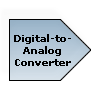 A digital-to-analog converter (DAC) is a semiconductor device that is used to convert a digital code into an
analog signal, such as electric charge, current, or voltage. An analog-to-digital converter (ADC) performs the
reverse operation. A DAC is the principal means by which computer and digitally-based systems translate digital
data into real-world signals.
A digital-to-analog converter (DAC) is a semiconductor device that is used to convert a digital code into an
analog signal, such as electric charge, current, or voltage. An analog-to-digital converter (ADC) performs the
reverse operation. A DAC is the principal means by which computer and digitally-based systems translate digital
data into real-world signals.
Relay Drivers for PLCs
 Designers of power electronic circuits must often drive power switches that feed DC, AC, or power signals to a
variety of workloads. Logic-level electronic circuits provide the driving signals. In general, however, the power
sources and their loads have reference levels different from that of the control circuitry (ground). MOSFET
selection begins by choosing devices that can handle the required current, then giving careful consideration to
thermal dissipation in high current applications.
Designers of power electronic circuits must often drive power switches that feed DC, AC, or power signals to a
variety of workloads. Logic-level electronic circuits provide the driving signals. In general, however, the power
sources and their loads have reference levels different from that of the control circuitry (ground). MOSFET
selection begins by choosing devices that can handle the required current, then giving careful consideration to
thermal dissipation in high current applications.
ZigBee Wireless Modules for PLCs
 Zigbee
is a specification for communication in wireless personal area networks (WPANs) and is designed for low-power,
cost-efficient, and low duty cycle applications. Built upon the IEEE 802.15.4 standard, Zigbee adds both routing
and multi-hop functionality. Star networks as well as peer-to-peer (e.g., mesh and cluster tree) are supported,
making Zigbee networks dynamic, scalable, and decentralized. These qualities and more make Zigbee an excellent
technology for applications like home/industrial automation, Industrial Applications monitoring, and HVAC control.
Zigbee
is a specification for communication in wireless personal area networks (WPANs) and is designed for low-power,
cost-efficient, and low duty cycle applications. Built upon the IEEE 802.15.4 standard, Zigbee adds both routing
and multi-hop functionality. Star networks as well as peer-to-peer (e.g., mesh and cluster tree) are supported,
making Zigbee networks dynamic, scalable, and decentralized. These qualities and more make Zigbee an excellent
technology for applications like home/industrial automation, Industrial Applications monitoring, and HVAC control.
RS-232 Transceivers for PLCs
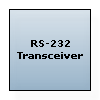 RS-232
refers to a set of standards for single-ended serial communication, and covers such things as logic voltage
levels, timing, signal rate, and physical characteristics of the connectors. An RS-232 port was once the standard
interface for connecting a personal computer with peripherals such as keyboards and modems, but has since been
largely replaced by USB. It continues to be used in other areas however; much of today’s industrial automation
equipment incorporates RS-232.
RS-232
refers to a set of standards for single-ended serial communication, and covers such things as logic voltage
levels, timing, signal rate, and physical characteristics of the connectors. An RS-232 port was once the standard
interface for connecting a personal computer with peripherals such as keyboards and modems, but has since been
largely replaced by USB. It continues to be used in other areas however; much of today’s industrial automation
equipment incorporates RS-232.
CAN Transceivers for PLCs
 CAN
is an acronym for
Controller Area Network
and refers to a fault-tolerant communications protocol that is flexible for system design, supports multiple
network topologies, and has become a de facto standard for high integrity serial communications in industrial and
automotive embedded applications. In a CAN network, several short pieces of data like a motor’s run status,
temperature, or RPM is broadcast over the entire network at up to 1 megabit per second (Mbps.) CAN is meant for
applications that have to report and consume numerous but small pieces of data consistently among nodes and has
the ability to self-diagnose and repair data errors. CAN is well-suited to environments with machinery, since CAN
is designed to be reliable in rugged environments that include interference or introduce noise. CAN is also
well-suited to the transportation industry.
CAN
is an acronym for
Controller Area Network
and refers to a fault-tolerant communications protocol that is flexible for system design, supports multiple
network topologies, and has become a de facto standard for high integrity serial communications in industrial and
automotive embedded applications. In a CAN network, several short pieces of data like a motor’s run status,
temperature, or RPM is broadcast over the entire network at up to 1 megabit per second (Mbps.) CAN is meant for
applications that have to report and consume numerous but small pieces of data consistently among nodes and has
the ability to self-diagnose and repair data errors. CAN is well-suited to environments with machinery, since CAN
is designed to be reliable in rugged environments that include interference or introduce noise. CAN is also
well-suited to the transportation industry.
Ethernet Transceivers for PLCs
 Ethernet
is the most commonly used technology for non-wireless local area networks (LANs). Ethernet controllers perform the
function of interfacing computers and other electronic devices in a network. Ethernet itself only defines the
physical (PHY) and datalink (MAC) layers of the OSI Model; however, processors with integrated Ethernet
controllers can provide additional functions such as a TCP/IP protocol stack.
Ethernet
is the most commonly used technology for non-wireless local area networks (LANs). Ethernet controllers perform the
function of interfacing computers and other electronic devices in a network. Ethernet itself only defines the
physical (PHY) and datalink (MAC) layers of the OSI Model; however, processors with integrated Ethernet
controllers can provide additional functions such as a TCP/IP protocol stack.
Current Driving Amplifiers for Programmable Logic Controllers
 Current sensing amplifiers
, also known as current-sense or current-shunt amplifiers, measure electrical current. The voltage across a
resistor in a current path is directly proportional to that current, per Ohm's law. Thus, measuring current is
highly dependent upon the resistor for accuracy. Integrated circuits for current measurement are more efficient,
accurate, and are an overall lower cost solution over a discrete current-sense solution.
Current sensing amplifiers
, also known as current-sense or current-shunt amplifiers, measure electrical current. The voltage across a
resistor in a current path is directly proportional to that current, per Ohm's law. Thus, measuring current is
highly dependent upon the resistor for accuracy. Integrated circuits for current measurement are more efficient,
accurate, and are an overall lower cost solution over a discrete current-sense solution.
Relays for PLCs
 Simply put, a relay is an electrical switch that is controlled electrically. Relays are often necessary to control
high power/current/voltage circuits with a low-power signal while maintaining complete electrical isolation
between them.
Simply put, a relay is an electrical switch that is controlled electrically. Relays are often necessary to control
high power/current/voltage circuits with a low-power signal while maintaining complete electrical isolation
between them.
Many relays are electromechanical in nature; the control signal energizes an electromagnetic coil creating a
magnetic field. This field exerts a force on a movable armature of ferromagnetic material (such as iron) which
makes or breaks the electrical connection.
Solid State Relays (SSRs) are another common type, and unlike their electromechanical equivalent, they have no
moving parts. Instead, one or more transistors, such as a MOSFET, are used to provide a similar function.
Electrical isolation must be added in this case, often by using an on-chip optocoupler.
Interface ESD for PLCs
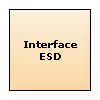 If you have ever been zapped by a socks-wearing kid who has just discovered static charge build up, you have
experienced ESD first hand. ESD is like a miniature, localized lightning bolt caused by an electrical discharge.
ESD can have seriously damaging effects on an integrated chip or system, or can cause poor performance or failure
later on by merely weakening the circuits.
If you have ever been zapped by a socks-wearing kid who has just discovered static charge build up, you have
experienced ESD first hand. ESD is like a miniature, localized lightning bolt caused by an electrical discharge.
ESD can have seriously damaging effects on an integrated chip or system, or can cause poor performance or failure
later on by merely weakening the circuits.
Ethernet ESD for PLCs
 Electrostatic Discharge
(
ESD
) is a naturally occurring phenomenon. If you have ever been zapped by a socks-wearing kid who has just discovered
static charge build up, you have experienced ESD first hand. ESD is like a miniature, localized lightning bolt
caused by an electrical discharge. ESD can have seriously damaging effects on an integrated chip or system and
cause poor performance or failure later on by merely weakening the circuits.
Electrostatic Discharge
(
ESD
) is a naturally occurring phenomenon. If you have ever been zapped by a socks-wearing kid who has just discovered
static charge build up, you have experienced ESD first hand. ESD is like a miniature, localized lightning bolt
caused by an electrical discharge. ESD can have seriously damaging effects on an integrated chip or system and
cause poor performance or failure later on by merely weakening the circuits.
D-SUB Connectors for PLCs
 A D-sub or "D-Subminiature Connector"contains two or more parallel rows of pins or sockets, usually surrounded by
a D-shaped metal shield that provides mechanical support, ensures correct orientation, and may screen against
electromagnetic interference. The part containing pin contacts is called the male connector or plug, while that
containing socket contacts is called the female connector or socket.
A D-sub or "D-Subminiature Connector"contains two or more parallel rows of pins or sockets, usually surrounded by
a D-shaped metal shield that provides mechanical support, ensures correct orientation, and may screen against
electromagnetic interference. The part containing pin contacts is called the male connector or plug, while that
containing socket contacts is called the female connector or socket.
Circular Metric Connectors for Programmable Logic Controllers
 Circular Metric Connectors
are cylindrical in shape and can have pin positions that make it impossible to mate in the wrong direction. This
is useful for when mis-connecting equipment can be catastrophic and fault-proof connections are needed. Data
rates, shielding, electrical characteristics, size, materials, and pin positions or contacts can vary widely,
depending upon use. These connectors are available in several shell and termination styles.
Circular Metric Connectors
are cylindrical in shape and can have pin positions that make it impossible to mate in the wrong direction. This
is useful for when mis-connecting equipment can be catastrophic and fault-proof connections are needed. Data
rates, shielding, electrical characteristics, size, materials, and pin positions or contacts can vary widely,
depending upon use. These connectors are available in several shell and termination styles.
RJ-45 Connectors for PLCs
 RJ-45 connectors are a type of electrical connector commonly used for Ethernet jacks. The term "RJ-45" is
something of a misnomer, but it almost always refers to an 8P8C (eight position, eight contact) modular connector
with wiring pin-outs compatible with standard Ethernet.
RJ-45 connectors are a type of electrical connector commonly used for Ethernet jacks. The term "RJ-45" is
something of a misnomer, but it almost always refers to an 8P8C (eight position, eight contact) modular connector
with wiring pin-outs compatible with standard Ethernet.